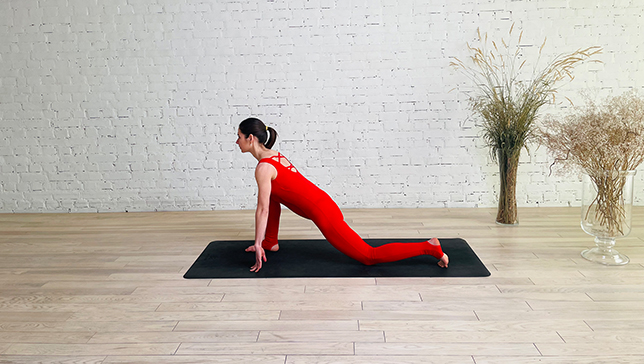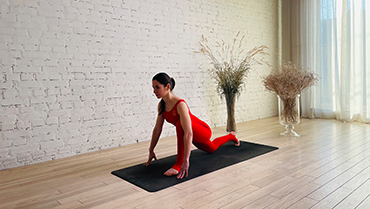Equestrian Pose - Ashva Sanchalanasana

Contents
Equestrian Pose, or Ashwa Sanchalanasana (AH-shwah sahn-chahl-ah-NAH-sah-nah) is a balancing posture that teaches the practitioner how to align opposing forces to create stability. The name comes from Sanskrit, and translates literally as horse (ashva) stepping movement (sanchalana) seat (asana).
Equestrian Pose is one of many yoga asanas, or shapes, that yogis form during their practice. Yoga teachers often incorporate this beginner-level pose into sequences for children and teens and routines that focus on the following muscles: hips, knees, hamstrings, psoas, lower back.
Ashwa sanchalanasana is also the fourth and ninth posture in the sun salutation, or surya namaskar, a sequence of powerful yoga positions purported to have numerous physical, mental, and spiritual benefits.
Pose Detail
- By Type: Balancing Yoga Poses, Flexibility Yoga Poses, Strengthening Yoga Poses
- Difficulty: Beginners
- Body Position: Standing Yoga Poses
- By Benefit: Yoga Poses For Digestion, Yoga Poses For Sciatica
Step-by-Step Instructions
Benefits and Contraindications
Strengthens the spine
Increases the flexibility of the back
Leads to better functioning of the liver
Improves the digestion
Strengthens the knees and ankles
Massages and tones the kidneys
Stimulates abdominal organs of the body
Helps in developing poise and control, and awareness
Helpful for patients of Sciatica
Strengthens the chest muscles
Stretches your back muscles, quadriceps, legs, and hips
Helps those suffering from Constipation
practice this pose with awareness if you have lower back, quadriceps, groin, knees or hips injuries
Neck problems
Late pregnancy
Postnatal women who are still gaining strength in their pelvic and hips
Senior citizens should avoid or use blanket under their knees
Photo poses in different angles

Modifications and Props for Beginners
- Knee padding: Placing a folded blanket or yoga mat under the back knee can provide extra cushioning and support for the knee joint.
- Blocks or bolster: Placing blocks or a bolster under the hands can provide additional support and help bring the ground closer to you. This modification can be especially helpful for those with tight hamstrings or limited flexibility.
- Elevated Lunge: Placing the front foot on an elevated surface like a yoga block, cushion or stairs can reduce the intensity of the stretch while still providing benefits for the pose.
Useful Tips
- In order to improve balance in Ashwa Sanchalanasana, practice it facing the wall.
- Press your front big toe against the wall while arching back in the final position.